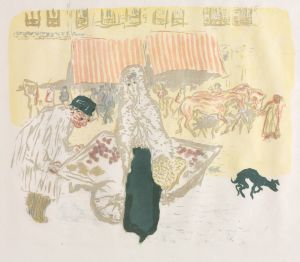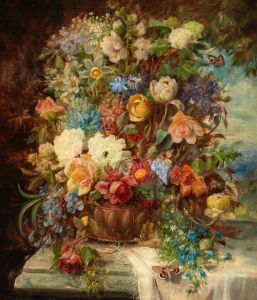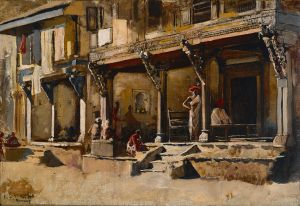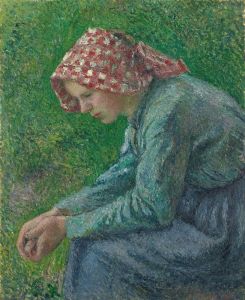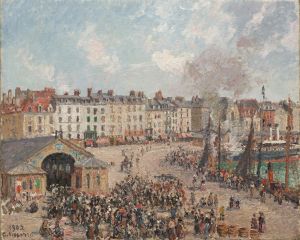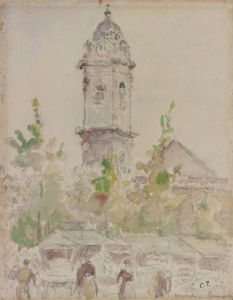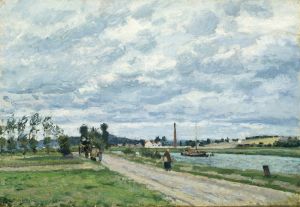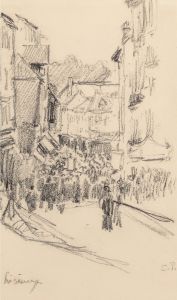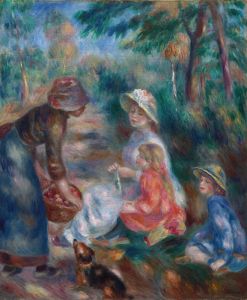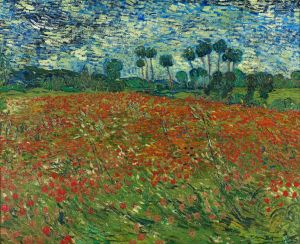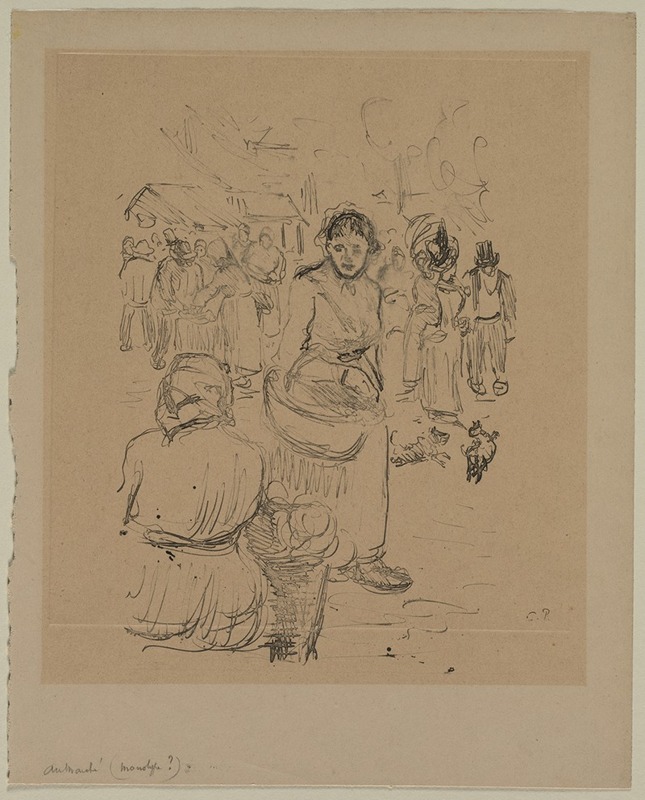
At the Market
A hand-painted replica of Camille Pissarro’s masterpiece At the Market, meticulously crafted by professional artists to capture the true essence of the original. Each piece is created with museum-quality canvas and rare mineral pigments, carefully painted by experienced artists with delicate brushstrokes and rich, layered colors to perfectly recreate the texture of the original artwork. Unlike machine-printed reproductions, this hand-painted version brings the painting to life, infused with the artist’s emotions and skill in every stroke. Whether for personal collection or home decoration, it instantly elevates the artistic atmosphere of any space.
Camille Pissarro, a pivotal figure in the Impressionist movement, painted "At the Market" in 1882. This painting exemplifies Pissarro's dedication to capturing the nuances of everyday rural life, a theme prevalent throughout his oeuvre. Pissarro, born on July 10, 1830, in St. Thomas, Danish West Indies, moved to Paris in 1855, where he became a central figure in the Impressionist circle, which included artists like Claude Monet and Edgar Degas.
"At the Market" is a testament to Pissarro's fascination with rural and peasant life, a subject he frequently explored. The painting depicts a bustling market scene, likely set in a small village or town, reflecting the artist's interest in the social and economic activities of the countryside. Pissarro's choice of subject matter was influenced by his anarchist beliefs, which emphasized the dignity and importance of the working class.
The composition of "At the Market" is characterized by Pissarro's signature style, which includes loose brushwork and a vibrant palette. The painting captures the lively atmosphere of the market, with figures engaged in various activities such as buying, selling, and conversing. Pissarro's use of light and color is particularly noteworthy; he employs a range of hues to depict the natural light and shadow, creating a sense of immediacy and movement.
Pissarro was known for his innovative techniques, and "At the Market" is no exception. He often painted en plein air, or outdoors, to better capture the transient effects of light and atmosphere. This approach is evident in the painting's dynamic composition and the way light plays across the scene. The brushstrokes are fluid and expressive, a hallmark of the Impressionist style, which sought to convey the artist's immediate perception of a scene rather than a detailed, realistic representation.
Throughout his career, Pissarro was committed to exploring the lives of ordinary people, and "At the Market" is a clear reflection of this interest. The painting not only depicts a specific moment in time but also offers insight into the broader social and economic context of the period. Markets were central to rural life, serving as hubs of commerce and social interaction, and Pissarro's depiction of this scene highlights the vibrancy and complexity of these gatherings.
"At the Market" is also significant for its historical context. Painted during a time of great change in France, the work reflects the shifting dynamics of rural and urban life. The late 19th century was a period of industrialization and modernization, and Pissarro's focus on rural scenes can be seen as a response to these changes, emphasizing the enduring importance of traditional ways of life.
Camille Pissarro's "At the Market" remains an important work within the Impressionist canon, celebrated for its vibrant depiction of rural life and its innovative use of color and light. The painting exemplifies Pissarro's commitment to capturing the essence of everyday scenes and his ability to convey the beauty and complexity of the world around him. Through his art, Pissarro offers viewers a glimpse into the lives of ordinary people, highlighting the universal themes of community, commerce, and the passage of time.





